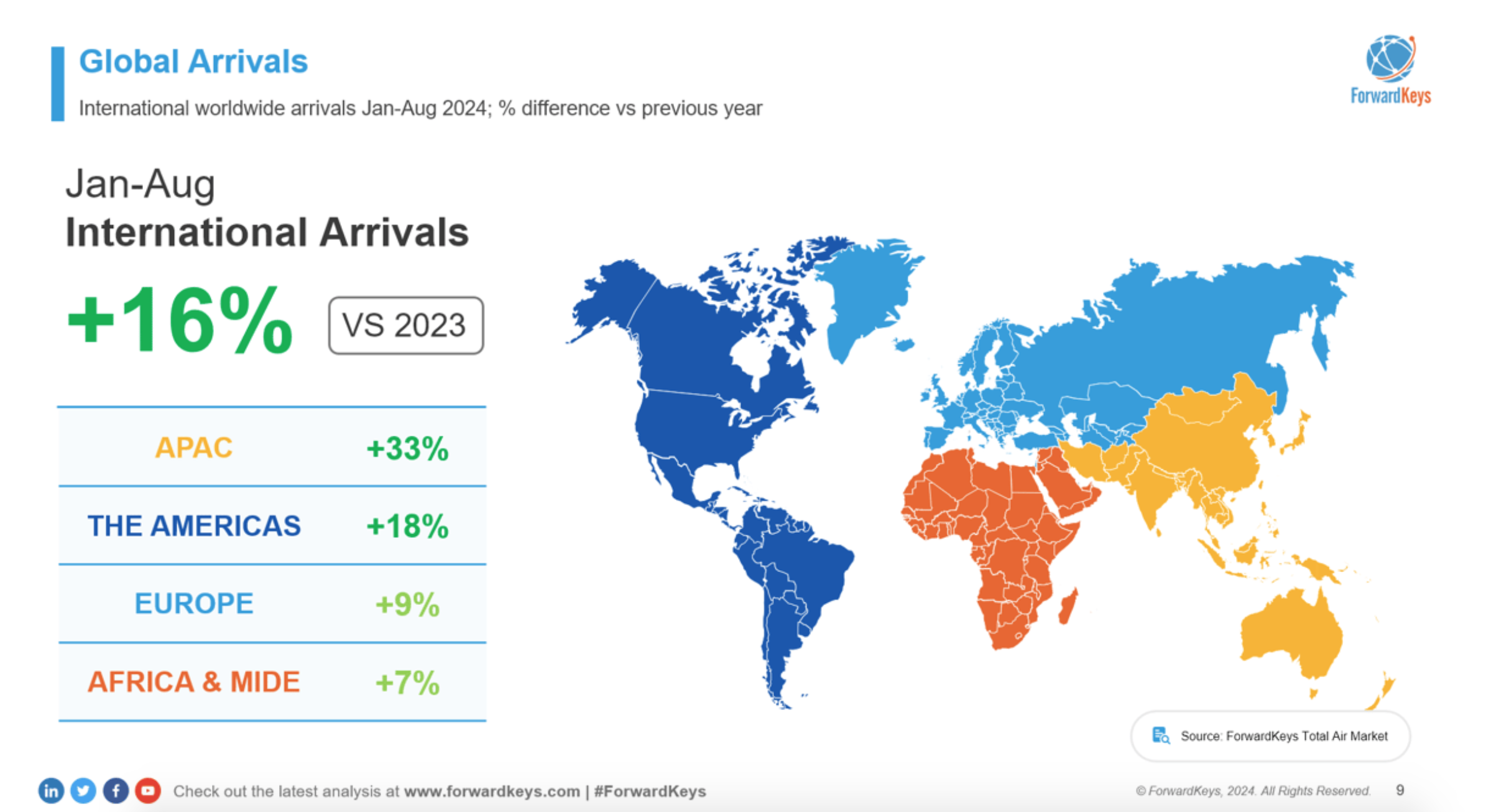The global tourism industry is roaring back to life in 2024, with international arrivals up 16% compared to 2023 – a resurgence largely fuelled by the Asia-Pacific region, which is finally hitting its stride after a delayed post-pandemic reopening, shared ForwardKeys during the WTTC 24th Global Summit in Perth.
ForwardKeys is the Knowledge Partner of the WTTC.

While the region still lags behind pre-pandemic levels, the current pace of year-on-year growth signals continued recovery and highlights the pent-up demand for travel within Asia-Pacific. This positive trend is set to continue through the end of the year, with double-digit growth in arrivals to China, Malaysia, Japan, Thailand and Indonesia fuelling a projected 19% overall increase.
Meanwhile, Oceania sees a 10% upswing, with arrivals to New Zealand and Australia being key drivers.
Increased connectivity boosts arrivals to Australia
Australia’s success story is particularly noteworthy, with a remarkable surge in arrivals from the US. In particular, bookings from US families (3-5 people) are up 43%, a positive indicator for the Australian economy, as families tend to spend more during their trips. Continued growth from China, projected at 25% through the end of 2024, further strengthens this positive trajectory.
A key factor in Australia’s tourism boom is the significant expansion of air connectivity. Airlines have increased overall capacity on international routes into the country by 8% for the latter part of 2024 – with higher growth in capacity from regional hubs like Thailand, Japan, Hong Kong, Vietnam, China, and Singapore.
 Data on seasonality is key to sustainable growth
Data on seasonality is key to sustainable growth
Australia’s tourism industry experiences a distinct seasonal ebb and flow. While the end-of-year holidays mark a peak period for travel, the southern hemisphere’s winter months see a significant dip in tourist activity. This pronounced seasonality contrasts sharply with destinations like Japan, which enjoys a more consistent flow of visitors throughout the year.
New Zealand, similar to Australia, experiences a pronounced peak season during the end-of-year holidays, with an even sharper decline during its winter months, highlighting the challenges and opportunities presented by seasonal variations in tourism.
“Destinations like Australia and New Zealand, with a distinct peak season, face the challenge of balancing demand throughout the year. Effective data-driven strategies are crucial for mitigating the negative impacts of seasonal fluctuations, such as overcrowding during peak periods and underutilised resources during the off-season. By diversifying source markets and promoting year-round attractions, destinations can ensure long-term, sustainable growth,”said Olivier Ponti, director of intelligence & marketing at ForwardKeys.











